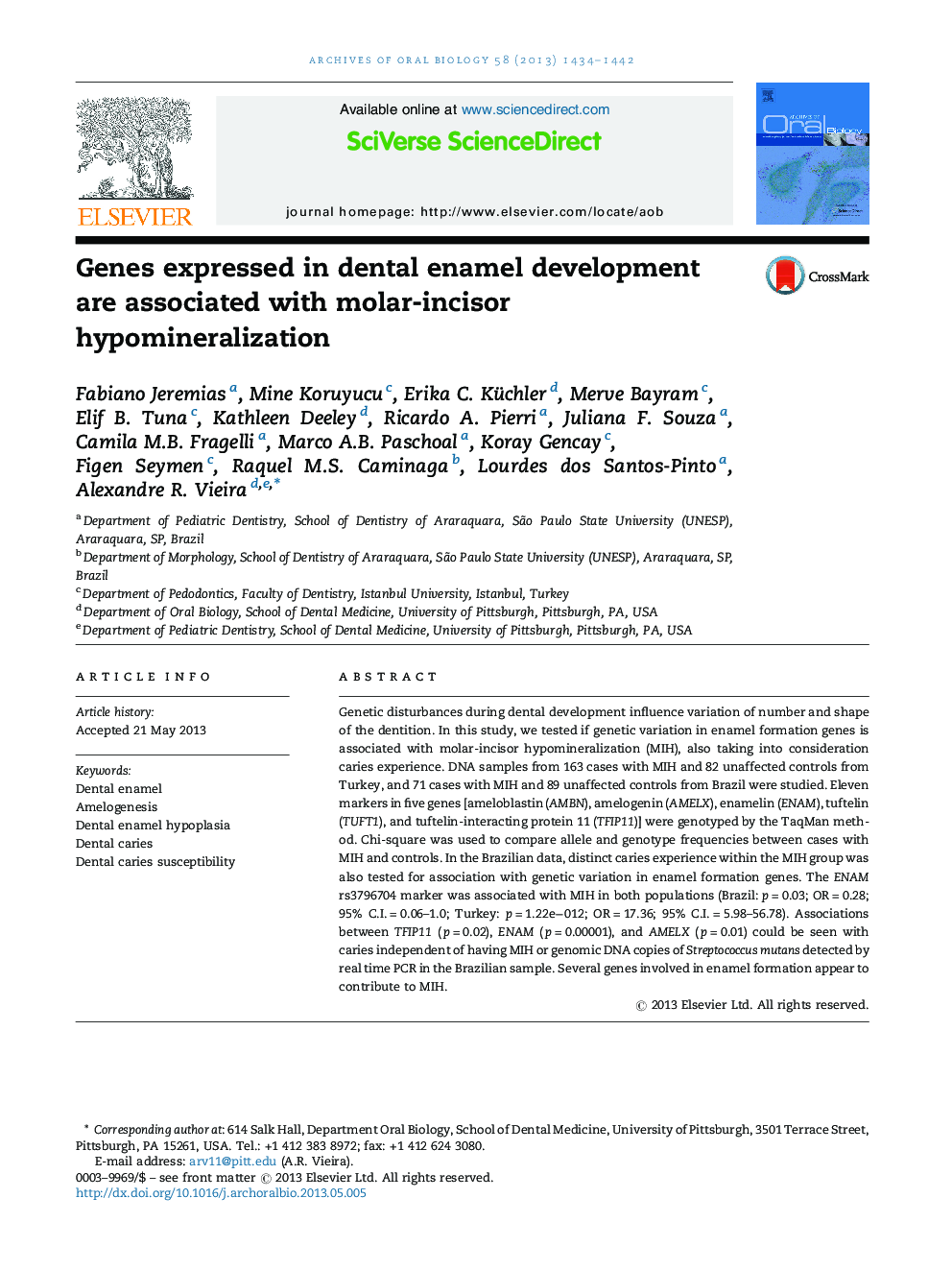| Article ID | Journal | Published Year | Pages | File Type |
|---|---|---|---|---|
| 6051758 | Archives of Oral Biology | 2013 | 9 Pages |
Genetic disturbances during dental development influence variation of number and shape of the dentition. In this study, we tested if genetic variation in enamel formation genes is associated with molar-incisor hypomineralization (MIH), also taking into consideration caries experience. DNA samples from 163 cases with MIH and 82 unaffected controls from Turkey, and 71 cases with MIH and 89 unaffected controls from Brazil were studied. Eleven markers in five genes [ameloblastin (AMBN), amelogenin (AMELX), enamelin (ENAM), tuftelin (TUFT1), and tuftelin-interacting protein 11 (TFIP11)] were genotyped by the TaqMan method. Chi-square was used to compare allele and genotype frequencies between cases with MIH and controls. In the Brazilian data, distinct caries experience within the MIH group was also tested for association with genetic variation in enamel formation genes. The ENAM rs3796704 marker was associated with MIH in both populations (Brazil: p = 0.03; OR = 0.28; 95% C.I. = 0.06-1.0; Turkey: p = 1.22eâ012; OR = 17.36; 95% C.I. = 5.98-56.78). Associations between TFIP11 (p = 0.02), ENAM (p = 0.00001), and AMELX (p = 0.01) could be seen with caries independent of having MIH or genomic DNA copies of Streptococcus mutans detected by real time PCR in the Brazilian sample. Several genes involved in enamel formation appear to contribute to MIH.
